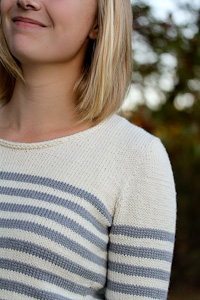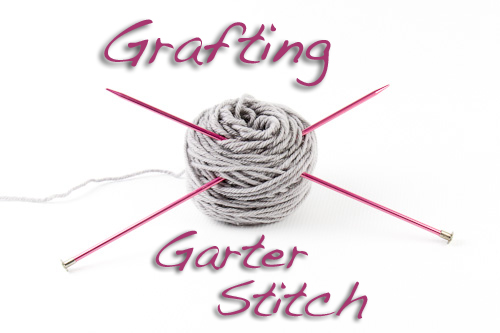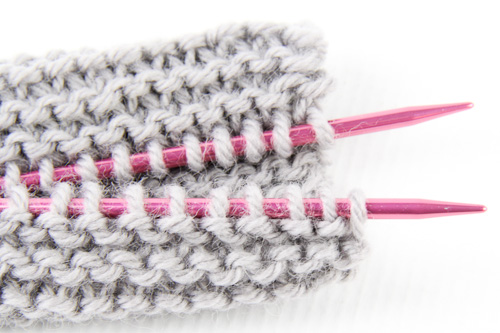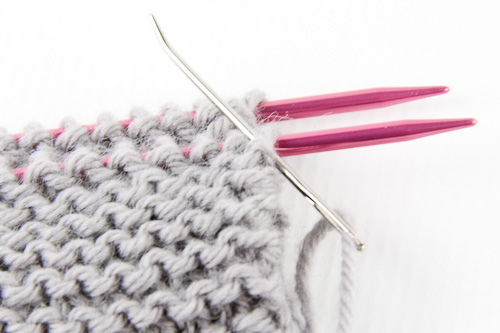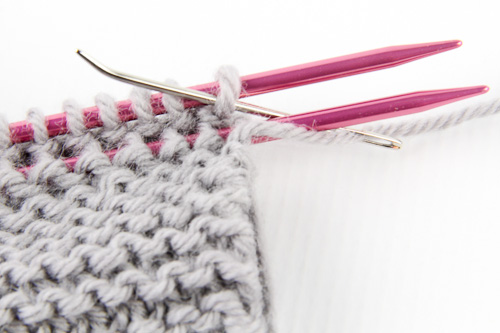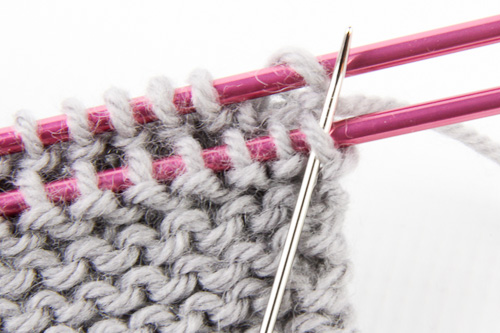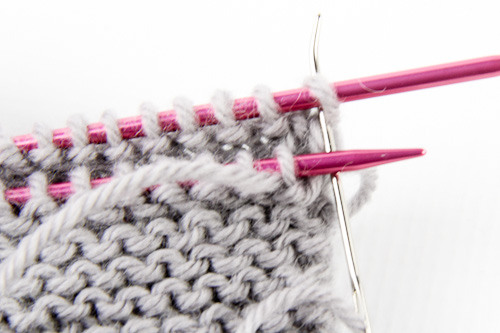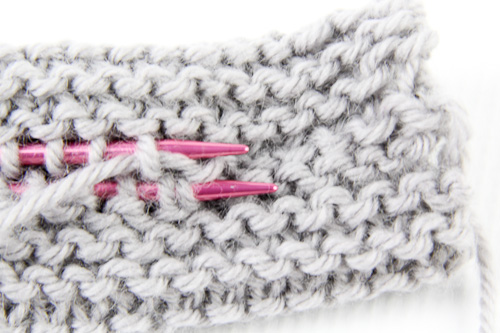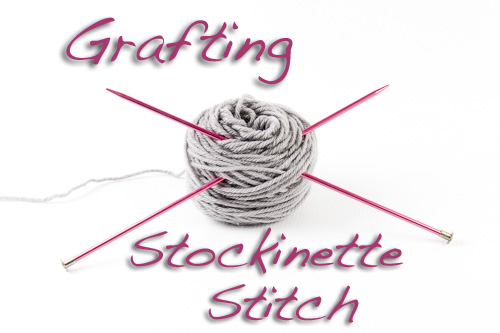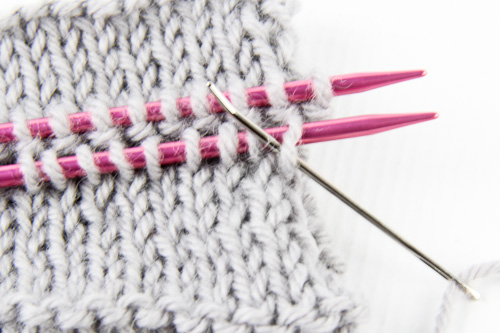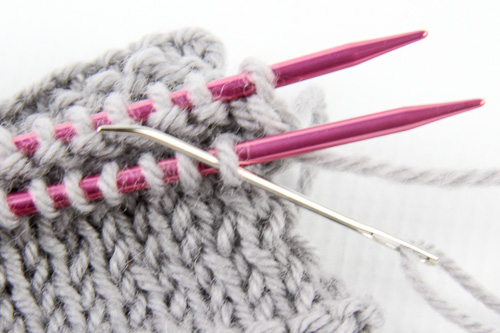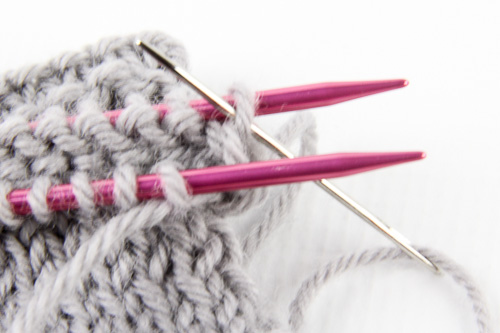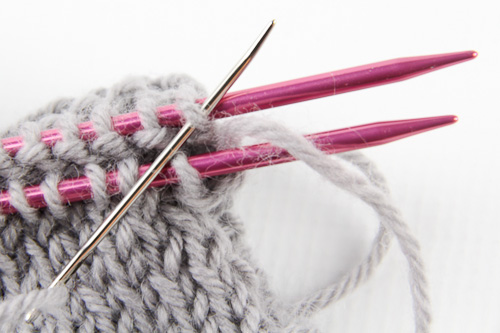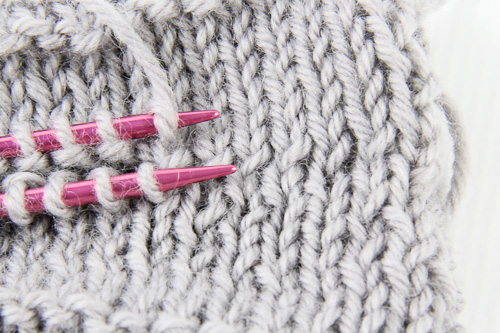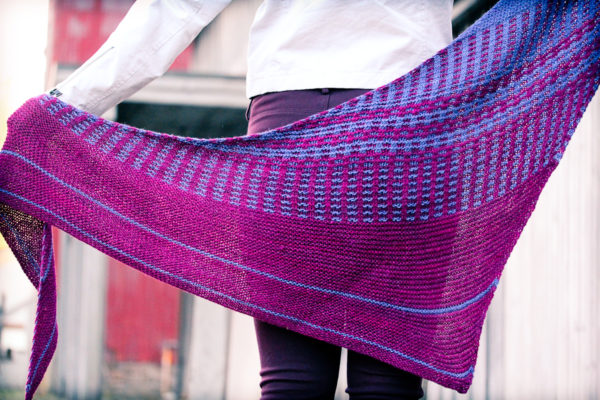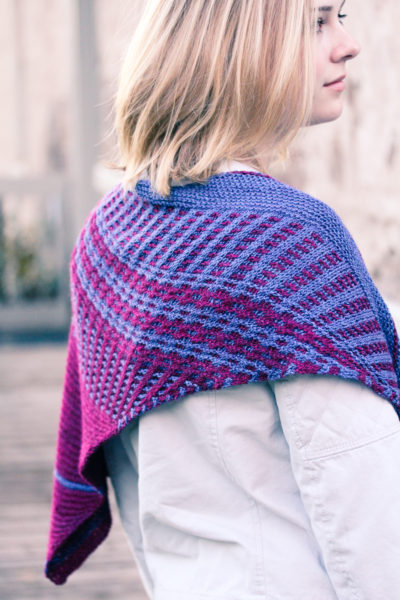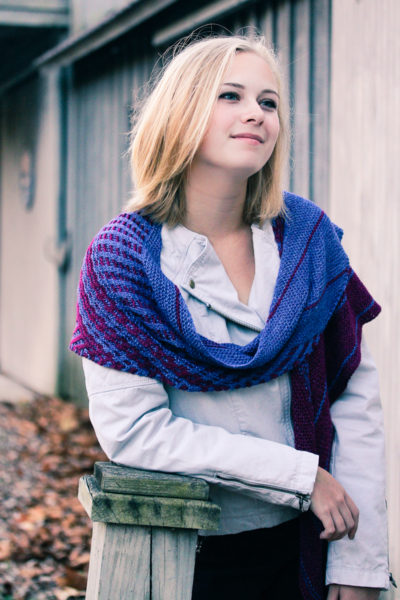As a confirmed topdown sweater knitter, I’ve embraced raglan, seamless set-in, and contiguous sleeve constructions that begin with a cast on at the top. My latest favorite adds the simultaneously worked sleeve to the seamless, set-in method. It’s a nifty way to create that tailored set-in sleeve look, without having to pick up stitches for the sleeve cap from the armhole and then work short rows, or knit the sleeve separately and seam it into the armhole. Mind you, I love a good short row sleeve cap. It’s just nice to have additional techniques available for when you feel like a change, or have a technical need such as an easy way to make perfectly matched stripes around the upper body and sleeves of a sweater.
Simultaneous sleeves are a variation of the seamless topdown sweater method. In that method, you cast on stitches for the back shoulders and neck, and work (often with a tiny bit of short row shoulder shaping) to the armscye depth. Then you pick up stitches from each back shoulder and work the right & left fronts to the identical depth, including neck shaping and any shoulder shaping. Typically the body front & back are then joined and worked to the hem; the sleeves are added afterwards by picking up stitches around the armhole, working a short row sleeve cap, then joining and finishing the sleeve in the round.
The simultaneous sleeve element alters this method in that you only work the back stitches, and the right & left front stitches, until there is enough depth to form the top of the sleeve caps, perhaps 2 or 3″ total depending on the style. Then both fronts and the back are united by picking up stitches for the sleeve caps along the edge rows, and the body is worked in one piece to the armscye depth where the sleeves are divided. In addition to the neck shaping and armhole shaping that occurs on the body, the sleeve cap is also shaped with increases at the same time – so there’s A LOT going on, which makes it fun.
This diagram shows a pullover, viewed from the top:
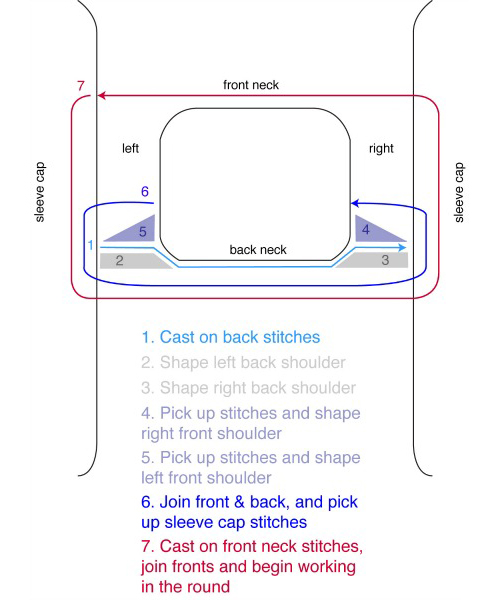
It does take some planning to fit in everything that happens together – rapid sleeve cap increases to round the top of the sleeve, neck shaping at whatever rate is necessary to create a round, scoop or v-neck, and finally increases on the body to shape the armscye such that the front and back meet under the arm. The maths can all be done separately, but then have to be enacted at the same time while knitting. Working a sweater for yourself in one size is fairly straightforward; more challenging is writing a pattern in multiple sizes, where the rate of shaping differs among the sizes.
I decided to approach the issue by addressing each section of shaping one rate at a time; for example, I’ll say “Increase Sleeves Every Row,” then “Increase Sleeves Every Other Row,” then “Increase Sleeves & Front Neckline Every RS Row,” then “Increase Sleeves Every RS Row & Front Neckline Every Row,” writing out the instruction while telling you how many times to do it. It’s clear and walks you through the upper bodice step by step, which is helpful both if this construction is unfamiliar, and if you’d rather not set up your own spreadsheet for keeping track of multiple shaping at the same time.
My first Seamless, Simultaneous, Set-in Sleeve Sweater is almost ready for release, and my goal has been to make an easy to understand pattern for this excellent construction method. The sweater itself, and the fit of the set-in sleeves, came out great!
